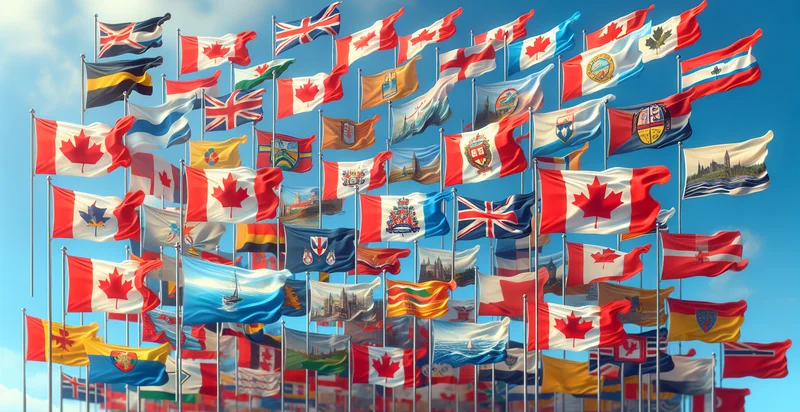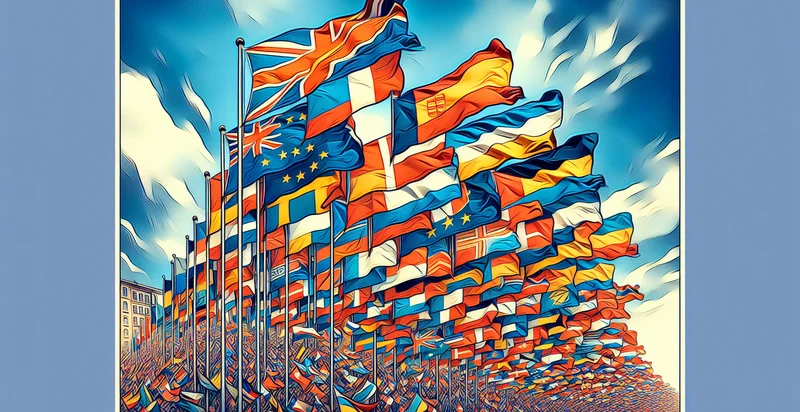Identify canadian city flags
using AI
Below is a free classifier to identify canadian city flags. Just upload your image, and our AI will predict which Canadian city the flag represents - in just seconds.

Contact us for API access
Or, use Nyckel to build highly-accurate custom classifiers in just minutes. No PhD required.
Get started
import nyckel
credentials = nyckel.Credentials("YOUR_CLIENT_ID", "YOUR_CLIENT_SECRET")
nyckel.invoke("canadian-city-flags-identifier", "your_image_url", credentials)
fetch('https://www.nyckel.com/v1/functions/canadian-city-flags-identifier/invoke', {
method: 'POST',
headers: {
'Authorization': 'Bearer ' + 'YOUR_BEARER_TOKEN',
'Content-Type': 'application/json',
},
body: JSON.stringify(
{"data": "your_image_url"}
)
})
.then(response => response.json())
.then(data => console.log(data));
curl -X POST \
-H "Content-Type: application/json" \
-H "Authorization: Bearer YOUR_BEARER_TOKEN" \
-d '{"data": "your_image_url"}' \
https://www.nyckel.com/v1/functions/canadian-city-flags-identifier/invoke
How this classifier works
To start, upload your image. Our AI tool will then predict which Canadian city the flag represents.
This pretrained image model uses a Nyckel-created dataset and has 29 labels, including Brampton, Calgary, Edmonton, Greater Sudbury, Halifax, Hamilton, Kelowna, Kitchener, Langley and London.
We'll also show a confidence score (the higher the number, the more confident the AI model is around which Canadian city the flag represents).
Whether you're just curious or building canadian city flags detection into your application, we hope our classifier proves helpful.
Related Classifiers
Need to identify canadian city flags at scale?
Get API or Zapier access to this classifier for free. It's perfect for:
- Urban Brand Identity Analysis: Organizations can utilize the ‘Canadian city flags’ identifier to assess and enhance their brand positioning within various Canadian cities. By identifying and classifying city flags, businesses can engage in targeted marketing campaigns that resonate with local culture and pride.
- Tourism Marketing Campaigns: Tourism boards can leverage the image classification function to curate promotional materials that feature city flags. By highlighting local symbols, they can create compelling narratives that attract tourists interested in authentic local experiences.
- City Merchandise Development: Retailers can use the identifier to design city-specific merchandise such as apparel, souvenirs, and home decor that incorporates the correct city flags. This ensures cultural relevance and boosts sales among residents and visitors who wish to celebrate their city’s identity.
- Educational Tools and Resources: Schools and educational institutions can integrate the classification function into their curriculums to teach students about Canadian geography, history, and city symbols. By utilizing city flags, educational materials can become more interactive and engaging.
- Cultural Heritage Conservation: Museums and cultural organizations can use the ‘Canadian city flags’ identifier to categorize and display flags as part of exhibitions that celebrate local heritage. This allows for a deeper understanding of city identity and fosters community engagement through historical context.
- Event Planning and Branding: Event planners can utilize the identifier to ensure that regional festivals, parades, and public events prominently feature the correct city flags. This attention to detail in branding helps to create a sense of unity and pride among participants and attendees.
- Social Media Engagement and Campaigns: Social media strategists can apply the classification function to create shareable content related to city flags, encouraging local citizens to engage with their city’s identity. Flag identification can lead to user-generated content campaigns that celebrate community spirit and enhance brand visibility online.


